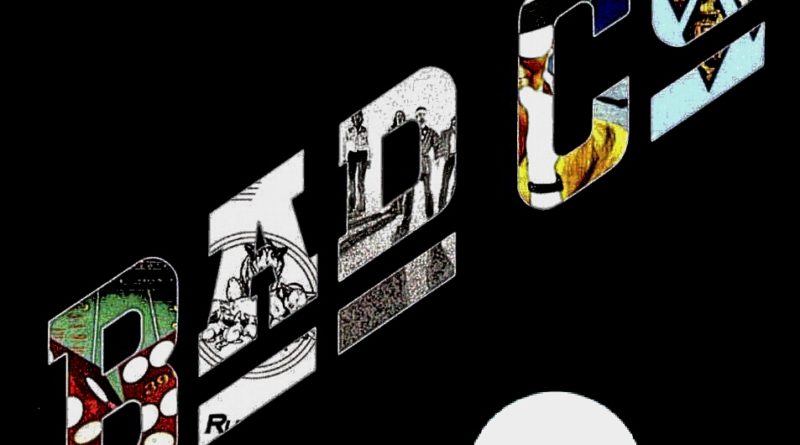Til’ The Day I Die: Talking Bad Company With Simon Kirke
The RNR Globe enjoys an exclusive chat with the renowned Free drummer about the English supergroup’s storied Swan Song catalog

A 70’s hard rock ‘n’ roll legend, the proverbial shooting star they described in one of their biggest hit singles, Bad Company and their precipitous eight year rise and fall is rock lore worth revisiting.
The slightly vengeful (and possibly true) legend says this talented foursome, made up of vocalist Paul Rodgers and drummer Simon Kirke from Free, guitarist Mick Ralphs from Mott the Hoople and bassist Boz Burrell from King Crimson, rose too high too fast, propelled Icarus-like on a limited batch of song ideas and so predictably crashed to earth once they’d exhausted their meager cache of stock riffs and inane lyrics. Endless touring put the final nail in their coffin, sending them spinning into substance abuse and wringing out whatever creative energies they had left. A new boxed set from Rhino Records, featuring remastered versions of the first six records, the band’s years on Led Zep’s Swan Song label 1974-1982, gives new life to these judgments.
AUDIO: Bad Company s/t (full album)
It all started of course with a bang, a big one, with the June 1974 release of Bad Company, an album that spawned five album rock singles (“Can’t Get Enough, Movin’ On, Rock Steady, Bad Company” and “Ready for Love”) and is now five times platinum and counting. Remastered several times since its release, most recently in 2015, the debut remains a nostalgic landmark for Bad Company drummer Kirke.
“The last couple of years of Free had been really rough. And Mick (Ralphs) from Mott the Hoople was such a joy to be with. He was funny, he could play great guitar, he wrote great songs, he got on very well with Paul so that bled over to my relationship with them and then Boz, he was two years younger than Mick but he was older than me and Paul, but he had a more mature outlook.”

“The pervasive air of that album (Bad Co.), that ten days when we were recording was unbridled joy,” Kirke says recently from Salt Lake City where the current version of Bad Company was playing a show. “We’d come from three bands that had been struggling. Free had kind of ground to a halt. In Mott the Hoople, Mick and Ian Hunter weren’t getting on, so to be able to play with three other guys, just unfettered, no holds barred, it was just wonderful. After every track it was like `Wow, fuckin’ hell guys, this sounds really good.’ Where did we go right? And it lasted for quite a few years.”
Full Disclosure: In 1974, I was part of a group of twelve entirely innocent boys, none of whom were old enough to drive, who got rolling drunk one winter’s night while Bad Company’s debut played over and over again in the background. There we were, indestructible, all destined to live forever, with two cases of 12 oz. cans of beer—Schmidt’s and Rolling Rock if memory serves—piled on a toboggan. After a failed attempt to build a bonfire, the all-important beer, back on the sled, was hauled across a snowy golf course into a basement rec room. There a “stereo,” (in the console sense of the word) was soon blaring. One of those indelible, “this song reminds me of” moments, I have vivid memories not only of frozen beer and prodigious vomit, but of Paul Rodgers voice and those irresistible electric guitar chord progressions on a record that stacked hit after hit.
As any band that’s ever achieved it can tell you, the curse of a blockbuster debut is that you eventually have to follow it, and comparisons, especially with yourself, can be an ugly thing. However, after the fastball of the first album, this supergroup of sorts had a potent second pitch, a batch of songs that to many ears sounded even better than the first. Straight Shooter, the band’s second record, and like the debut with cover artwork by famed design studio Hipgnosis, remains the highpoint of the band’s studio career for Kirke and many fans.
“On the first album, `Can’t Get Enough’ was written by Mick I think in late ’72 but Ian Hunter didn’t want to do it. `Movin’ On’ and `Ready for Love’ were Mick songs and ‘Ready for Love,’ had actually been done by Mott the Hoople a few years before. Paul had written `Rock Steady’ and `Seagull’ by himself, so it was all very insular writing, there wasn’t much collaboration on the first album apart from me and Paul writing `Bad Company,’ Kirke says. “By Straight Shooter, Bad Company had been around for fifteen months and we’d done a couple of tours and were much more of a band.”
AUDIO: Bad Company Straight Shooter (full album)
If one hit record put pressure on the band, having a second hit album, one generally praised by critics and snapped up by fans, made the future even more daunting. This new box, containing the latest remasterings of the original band’s six albums, which were done progressively between 2015-2018, begs the question of what happened? It asks listeners to move beyond those first two hit records into a reappraisal of what came after. For example, is it rank nostalgia or the general lack of great songwriting in what’s left of rock music today that has Run with the Pack sounding better in retrospect?
To be honest, I remember being disappointed by that record upon release but then I was an utter devotee of the first two. Its success sent the band on a whirlwind lifestyle, what Kirke now calls “literally living the dream,” of album-tour, album-tour that was common in the seventies. While fame and cash were plentiful, rest and time for the creative juices to recharge were not.
AUDIO: Bad Company Run With The Pack (LP)
By the third album, Run with the Pack (1976), it was clear that the ideas were beginning to run thin. Rodgers’ title track and “Silver, Blue & Gold” were solid as were Ralph’s “Simple Man,” and “Sweet Lil’ Sister,” but the album’s biggest hit was a rocked-up cover of Lieber & Stoller’s “Honey Child.” Perhaps it’s as simple as they were a brilliant flash in the pan? A group of outstanding instrumentalists who were not prolific songwriters. Players who were in it for the money not the art? Or perhaps had they come off the road and spent quality time fashioning original material they might have lived on? Kirke admits the road burn began to take a toll. While they all contain worthy tracks, Burnin’ Sky, Desolation Angels (with their last hit single, “Rock and Roll Fantasy”) and Rough Diamonds are all much lesser efforts.
“Nowadays bands wait years between tours, but back then there was a certain paranoia on behalf of the management that, `fuck if we let these guys have a break, maybe it will all fall apart?’; when, in fact, that opposite was true.”
One question that’s always hung over the band and that might have provided a solution back then to their constant road doggery was releasing a live album which never happened until 2016 when Rhino Records belatedly released, Bad Company Live 1977 & 1979.
“I really don’t have an answer, no,” Kirke says. “I think (Led Zep and Bad Company manager) Peter Grant was anti singles. When it came to live albums he did (Led Zeppelin’s) Song Remains the Same but he never sanctioned a live album for Bad Company. Live albums and solo albums tend to be the black sheep of the record collection family and for some reason, maybe Ahmet Ertegun and Peter Grant, they were very close friends, but we never got ’round to making a live album with the four original members.
“Now back in the 70’s, we were all a little bit hazy on certain substances and Mick managed to get a cassette by us, a live cassette and I don’t know how it got out (now a bootleg called Live Albuquerque, NM USA-1976) but it’s actually really good. We were on a roll in `76 and it was a very good performance thank goodness.”
AUDIO: The Best of Bad Company in Albuquerque, NM 3/3/76
Like a lot of 70’s acts Bad Company did not dawdle in the studio, where time and tape were costly. Saying that recording fast was the way the band liked it, Kirke says the process used for all six original albums in this set was relatively uncomplicated.
“It was all done on two-inch tape, and we had a great engineer (Ron Nevison), and we produced most of the albums ourselves. Basically everything is in the performance. I’d like the say it was all done in single takes, but that’s really the holy grail. I don’t think any tracks were done in one take. The way that Free recorded, and Bad Company years later, was we’d rehearse, run it two or three or four times just to get all the salient points, the intro, etcetera, etcetera and then we’d take it. Paul would add his vocal. And then maybe a lead guitar overdub and possibly harmonies but the basic track was never done more than two or three times.”
As for extra takes and unreleased songs, Kirke says the barrel is basically empty, with a few alternate takes hanging around in the vault. Unlike Jimmy Page and Led Zeppelin who were and are famously picky about reissues, Kirke and Rodgers decided to trust the process and other ears for the 21st century remasterings.
“Let’s go back to the Beatles who did everything on four tracks and they’re stunning. I used ten tracks on my drums let alone all the others. So it’s a tip of the hat to Geoff Emerick, and the Beatles and George Martin but nowadays with better mastering…from my point of view, the drum sounds (on the new remasterings) are amazing. It’s very hard to improve on Paul’s vocals because he’s such a great singer but the clarity of the vocals in these new remasterings, the whole musical tapestry really is bright and clear. It’s like they removed an opaque film from the original, which was very good, but they’ve done a wonderful job.”
VIDEO: Bad Company Don Kirshner’s Rock Concert 1974




